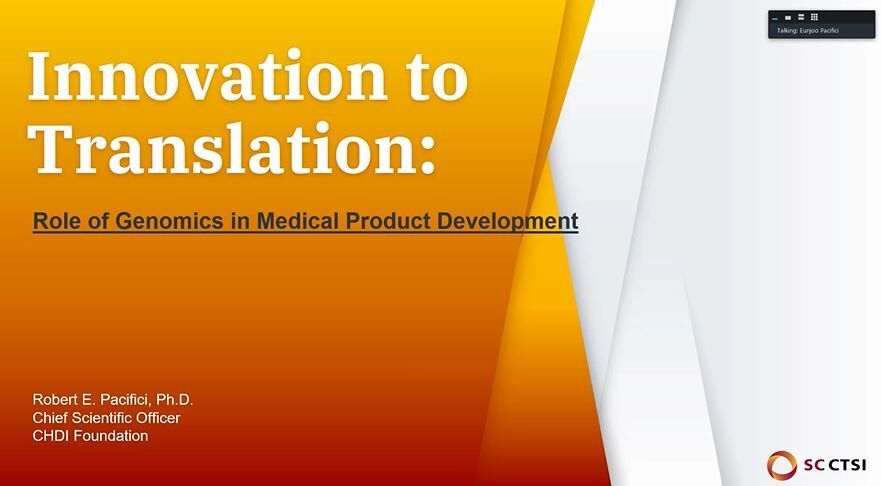We all share the same genome, but small changes can make a big difference!
- Genotype (genetic make-up) impacts one’s phenotype (external appearance)
- Both impact health of an individual
- “Unlucky” genes vs “lucky” genes
- Identifying disease genes is fundamental because it provides for the opportunity to discover and develop new medicines associated with “lucky” genes
- Genotype (genetic make-up) impacts one’s phenotype (external appearance)
Very luck (modifier) genes!
- A scientific paper from Nature Biotechnology revealed that an analysis of 589,306 genomes identifies individuals resilient to severe Mendelian childhood diseases
Innovation in DNA Sequencing technology is driving a revolution in Translation
- Comprehensive
- Unbiased whole genomes sequencing
- Databases populated from larger number of people
- Non-invasive
- Easy to obtain DNA
- Continuous improvement on all metrics
- Decrease cost
- Decrease cycle-time
- Increase quality
- Genomics can impact drug and development at all stages in a myriad of ways
- Diagnosis
- Target identification
- Prognosis
- Stratification
Huntington’s Disease: What I work on and a good example!
- George Huntington – family doctor on Long Island
- Publishes his one and only paper in 1872, describing the movement disorder as chorea
- Huntington’s Disease (HD)
- A progressive brain disorder caused by a single defective gene
- Publishes in his one and only paper in 1872
- HD is a hereditary disease
- Autosomal dominant
- Inheritable from a parent with HD
- No recessive genes/carriers
The Hunt Begins to Clone the Causal Gene
- Monogenetic with 100% penetrance
- Relatively rare disease (1:10,000)
- Linkage analysis finds the marker in 1983
- Full gene sequence in 1993
Big deal, you know the gene, so what?
- HD is not caused by a point mutation
- Enables genetic testing for diagnostic purposes
- Family planning
- Animal models of HD
Directly enable discovery of HTT lowering drugs
- HTT refers to Huntingtin-Lowering Therapies
Development of pharmacodynamics biomarkers
Back to HD disease
- Inverse correlation between size and onset
- Smaller suggests later onset and vice versa
Back to the patients and families and their genetics
- (CAG) nucleotide accounts for 66% of age of onset but other factors can come into play
- The likelihood of “onset” is also heritable
Genomic Wide Association Studies (GWAS): Can be used to identify causal genes which modify disease onset and rate of progression
- Massive collaborate effort to identify the genetic factors that modify the clinical onset of HD
HD patients continue to provide the keys
- Identifying “bad” accelerator variants “good” genes
- Numerous genes associated with DNA
- Somatic instability theory refers to when DNA repair is flawed, repeating sections of the DNA code can become unstable
- For HD, HD genes will gain more CAGs in certain cells of the brain and body
Modulating rates of Somatic Instability
Stratify (prodromal) Clinical Trial Populations: (CAG)n and Modifiers
- CAG refers to a cytosine-adenine-guanine trinucleotide repeat expansion in the huntington gene, HTT
A Few Take Aways
- The revolution in genomics is having a profound impact on drug discovery
- Diagnosis
- Prognosis
- Stratification
- Target identification
- Biomarkers
- Therapeutic candidates
- Additional examples beyond HD across multiple therapeutic areas include PCKS9 à Repatha (Evolocumab) and Praluent (Alirocumab)

